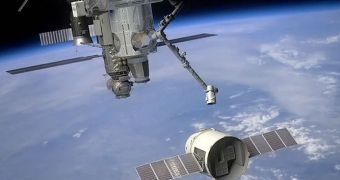The Hawthorne, California-based Space Exploration Technologies Corporation (SpaceX) last week became the first private company to achieve a stable orbital flight, atmospheric reentry, and capsule recovery. Now, its leaders announce big plans for the future.
Since it was first founded, back in 2002, the corporation has registered success after success. Even if it didn't always stick by its schedule, it did manage to fulfill its objectives to the letter.
This year was very important because it marked two major achievements – the first launch of the Falcon 9 delivery systems, and the second launch of the rocket, this time carrying the Dragon space capsule.
While building a medium-lift delivery system is hard enough on its own, launching one that carries a space capsule, and nailing all mission objectives on the first trial is even more complex, and also praise-worthy.
During the December 8 flight, a Falcon 9 booster lifted the unmanned space capsule to low-Earth orbit (LEO). The two separated, and the Dragon went on to complete a few orbits around the planet.
It then reentered the atmosphere, and landed – assisted by parachutes – in the south Pacific Ocean. The mission was therefore an astounding success.
SpaceX is working under a $1.6 billion contract with NASA, which was signed under the terms of the Commercial Orbital Transportation Services (COTS) program, Universe Today reports.
With the amazing results obtained last week, the company is now ready to step up its game within COTS, and is aiming for combining the second and third plan test missions into one.
The terms of the original agreement called for three Dragon test flights, of which the last was to see the capsule dock on the International Space Station. But SpaceX want to do this on the next Dragon flight.
But the American space agency doesn't seem to convinced that this is the way to go, and is considering not allowing SpaceX to carry out the two spaceflights in a single mission.
NASA has a risk-averse philosophy, and seeing the Dragon launch to the ISS as early as mid-2011 is not something it wants to pass through. It had harsh lessons in Challenger and Columbia, which were both destroyed due to lax security measures.
It remains to be seen whether SpaceX will eventually get permission to fly to the ISS. Until then, it still needs to upgrade some of its computer systems, and to installed solar panels on the space capsule.
The type of orbital maneuvers needed to hook up with the ISS is tremendously more complex than the ones that Dragon carried out last Wednesday.

 14 DAY TRIAL //
14 DAY TRIAL //